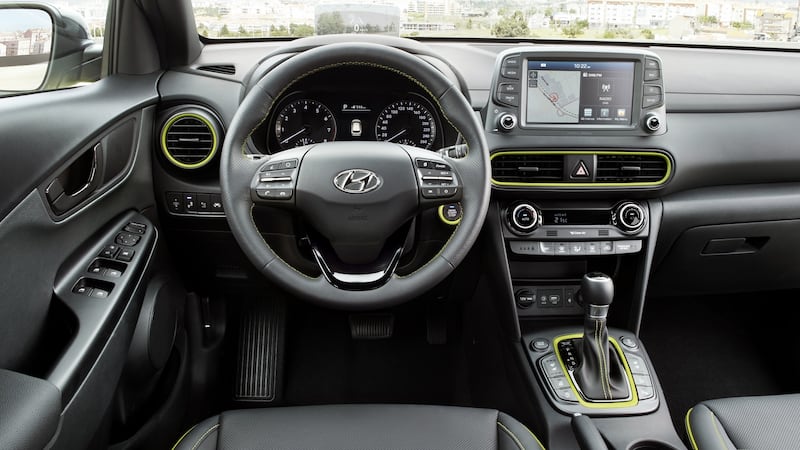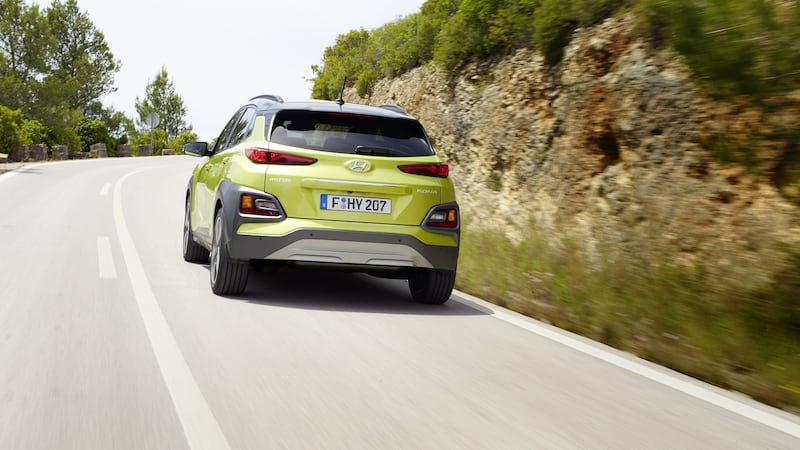Naming a car can be a marketing minefield. The tale of the Ford Pinto - which in Brazilian is a term for male genitalia - has entered popular folklore by now. So it's odd that senior managers at Hyundai signed off on the Kona name for its new baby SUV, given that the word phonetically translates in Portugese as slang for female genitalia. Understandably the car has been rebranded there as the Kauai.
Still it could be worse: they could have opted for something similar to sister brand Kia, which has christened its upcoming small crossover as the Stonic, which sounds more like a powerful laxative.
With ambitions to be the leading Asian car brand in Europe by 2021, Hyundai is expanding its crossover range with the addition of the new Kona. Further expanding Hyundai's SUV range in Europe, the Kona comes into the market below the best-selling Tucson, and aims to take on the likes of the Renault Captur and Toyota C-HR.
It’s the second small SUV crossover to be unveiled this week, following on from Citroen’s new C3 Aircross. Clearly this is one of the hottest growth segments in the motor world. Yet the new Hyundai has a few traits to give it an edge over rivals. For a start it will be offered in both front-wheel and four-wheel drive, while an electric version will also be introduced by the middle of next year.
This means the Kona will have variants to take on both the entry-end of this booming market, where prices range around €21,000, but also the upper end where Toyota’s C-HR seeks to lure customers with its hybrid offering in the €30,000 price bracket.
Style conscious
In terms of styling, the Kona's design showcases the Korean firm's new family identity. This segment of the market is arguably the most style-conscious, for customers are prepared to trade practicality of larger crossovers in return for more character. Thankfully for Hyundai, the Kona has the looks to win over buyers, even against more funky rivals like the Citroen. The Kona will not be the conservative or dull option.

According to Hyundai's chief design officer Peter Schreyer, key to the Kona's aim to take a lead in this segment is the daring design. The car takes its cues from an initial concept - the Intrado concept of 2014 - that originated in Hyundai's Californian studio, and was then overseen from Europe by ex-Audi designer Schreyer, and former Bentley and Lamborghini designer Luc Donckerwolke in Korea. Part of the styling touches includes the option of a two tone roof and a colour palate that features far more funky colours than we have seen before from the relatively conservative Koreans. Hyundai is starting to have some fun with its styling, perhaps gaining a little more confidence in itself.

Inside the car there are more colour touches in the cabin, around the air vents for example, that help to liven up Hyundai’s traditionally rather dull dashboard. The dash also features a “floating” touchscreen control unit, while the Kona will also be offered with a heads-up display for the driver.
While cars in this class often struggle with rear legroom, the Kona can easily cope with two adults in the back. Foldable rear seats mean luggage space can increase from 361 litres to 1,143 litres if needed. The dash is dominated by a standout “floating” touchscreen.
Off-roader and electric
Unlike rivals, the Kona will be offered with either front-wheel drive or a four-wheel drive option, giving it more off-road credibility than the rest of its rivals. The engine range features two petrol options at launch: a three cylinder 1-litre 120bhp and a 1.6-litre 177bhp. Coming in the middle of next year will be a 1.6-litre diesel with a choice of either a 133bhp or 150bhp variant.
A seven-speed automatic will be offered on the larger petrol and 150bhp diesel engine. The dual-clutch automatic claims 20 per cent lower CO2 emissions and 10 per cent better acceleration than the conventional six-speed manual transmission.
Hyundai will also bring introduce the electric version of the Kona for the middle of next of next year. While the range of the electric version has yet to be revealed, a spokesman did say the aim would be that it would exceed the firm’s current Ioniq electric car, which claims 280km on a full charge.
Big ambitions
According to Thomas Schmid, chief operating officer for Hyundai Motor Europe: "The Kona is not just another car among Hyundai Motor's established SUV range-it is an important milestone of our journey to become Asian automotive brand number one in Europe by 2021."
That 2021 target may seem very ambitious given the strength of rivals like Toyota, but given the transformation of the brand in the last five years into a top four player on the Irish market and elsewhere, it would be foolish to dismiss it.

Alongside the arrival of the Kona, Hyundai is revamping its model line-up. That means the end of the road for sales the Veloster coupe in Europe, a pity as the car was doing relatively well in Ireland. Joining the Kona in showrooms for next January will be a new four-door coupe version of the i30 - referred to as a Fastback - alongside an i30 estate. The long-awaited plug-in hybrid version of the Ioniq will also arrive in Ireland by the end of this year.
Hyundai's Irish story has been one of remarkable growth in the last decade, built largely on the back of success with its SUV models. The Kona adds to the brand's armoury, and will further worry rivals. It's certain to be a serious player on the market for 2018. Just don't shout the name out around Lisbon.











